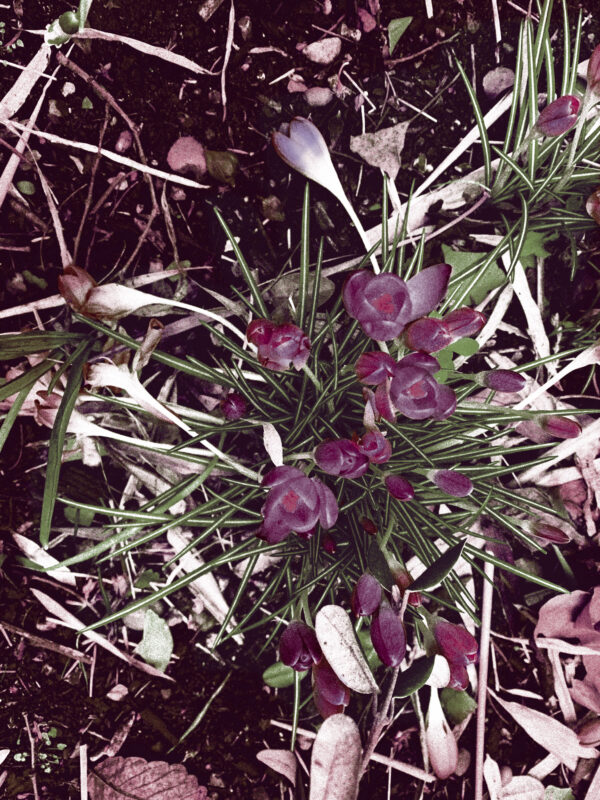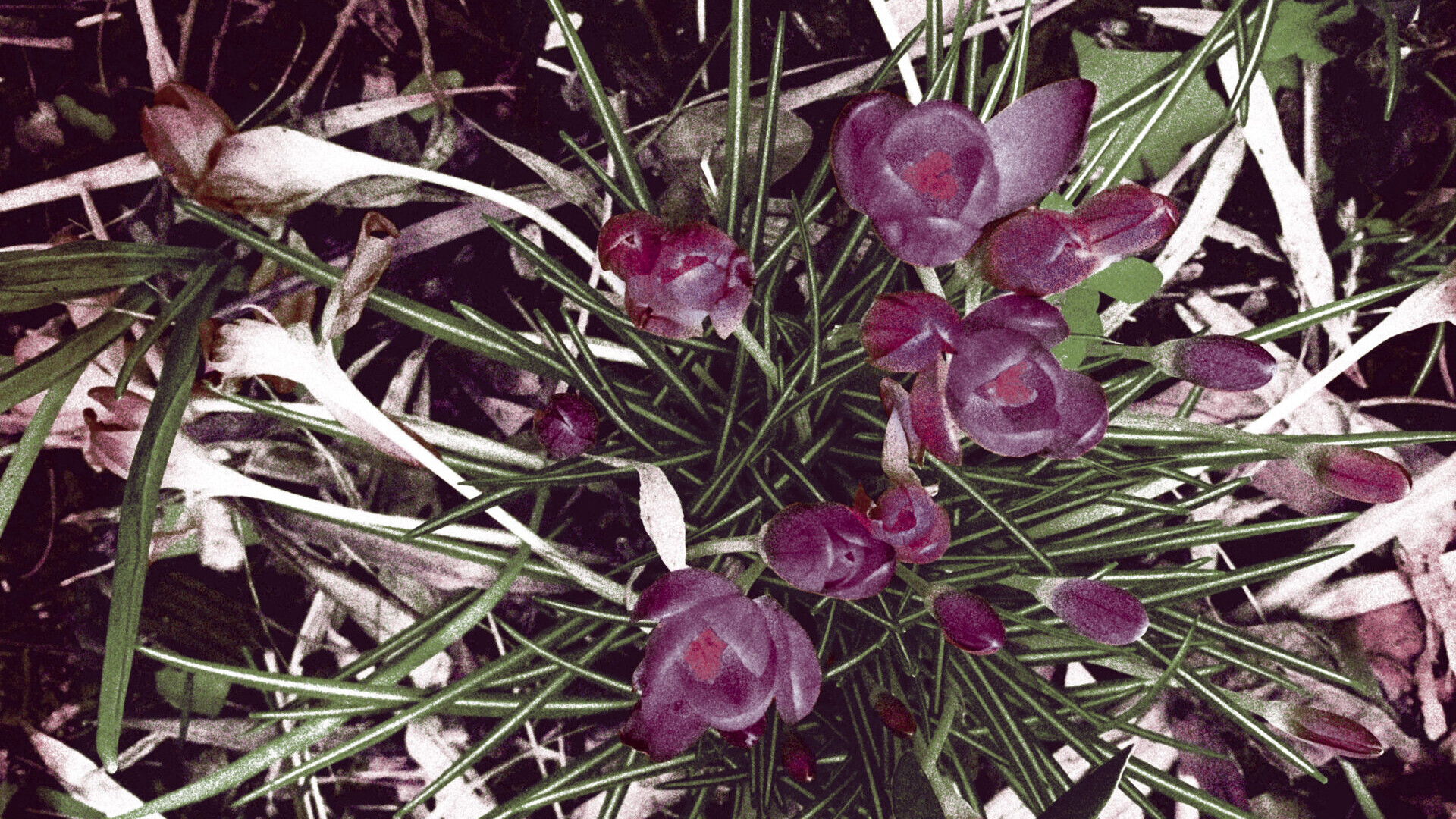Family: Iridaceae
Scientific Name: Crocus tommasinianus
Common Name: Early crocus
Origin: Albania, Bulgaria, Hungary, Yugoslavia
Here and throughout the Garden you will find Crocus tommasinianus, commonly known as early crocus. Crocuses have been a symbol of queer love for thousands of years. There are many different cultivars of the crocus. Cultivars are varieties that have been produced by humans for particular qualities such as size and colour.
The early crocus blooms in late winter and early spring and has purple, perfect flowers.
All crocuses can reproduce asexually through a process of creating new cormels from the corm of the plant. A corm is a swollen underground stem of a plant that stores nutrients. The cormel is the new cloned corm that forms from the larger older parent.
Crocuses can also reproduce sexually by pollination and seed production.
There is an ancient Greek myth that tells of the plant’s origin. Crocus was the name of a young human male who was the lover of the god Hermes. Hermes was a messenger god who could travel between the mortal world and the realm of the gods using his winged sandals. The two were playing discus. Crocus was hit in the head with the discus and was accidently killed. In Hermes’ grief, he transformed the blood on the ground into the crocus flower.
The hyacinth flower has a very similar origin myth to the crocus. The myth is about the Greek god of light and healing, Apollo, and his love for the mortal male Hyacinthus.
Audio version read by Queer Botany founder, Sixto-Juan Zavala:


